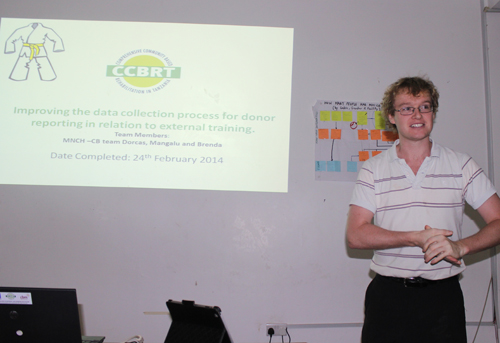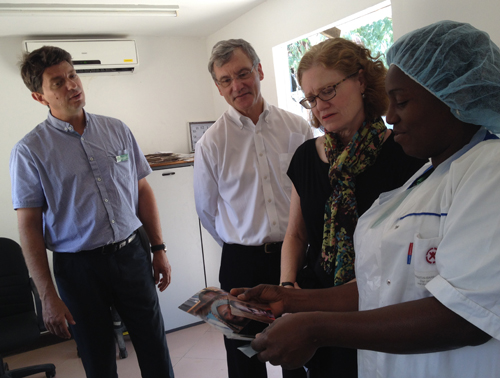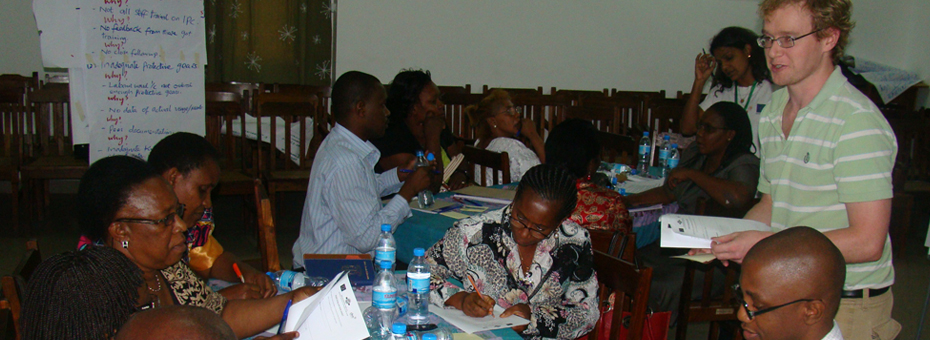After months of anxiety, my work life had finally come to a climax. I’d arrived at the point of no return. I finally told my boss “I quit.”
I was walking away from my comfort zone in corporate America to coach lean thinking in a hospital in one of the poorest, but most interesting countries in the world, Tanzania. I knew I would rather go and fail than stay and never know. Two years have passed since that day. I offer my reflections on these two years so that you might reflect on the comfort zones in your life that you possibly need to break free from.
When I quit my job in the US, I had already been to Tanzania three times. On my second trip I fell in love – not with the woman of my dreams (this is still pending!) – but with a particular healthcare organization – CCBRT (Comprehensive Community Based Rehabilitation in Tanzania) in Dar Es Salaam. For 20 years, CCBRT has transformed lives through disability and maternal healthcare services. I was the organization’s sole lean coach with the responsibility of initiating a lean transformation. No easy task as this is a 450 person organization. A lot of the credit for me being there goes to CCBRT’s CEO Erwin Telemans. He was the one who invited me and had the courage to experiment with this “lean thing”. In Tanzania, Lean in healthcare was unheard of, but he saw the potential. So we started to dream big.
Getting to Work
 We first initiated classroom training focused on problem solving – certifying staff as “yellow belts” for those who completed the curriculum (four days of training and two improvement projects). Most senior leaders welcomed me on board. This “lean thing” was looking a lot like “structured common sense.” There was also natural skepticism. Is lean thinking really applicable in healthcare? Will it work here? If you asked my team members to describe me in those early days, they probably would say passionate, over enthusiastic, and “talks way too fast.” I had many lessons to learn, but the CEO and I were determined to keep moving forward.
We first initiated classroom training focused on problem solving – certifying staff as “yellow belts” for those who completed the curriculum (four days of training and two improvement projects). Most senior leaders welcomed me on board. This “lean thing” was looking a lot like “structured common sense.” There was also natural skepticism. Is lean thinking really applicable in healthcare? Will it work here? If you asked my team members to describe me in those early days, they probably would say passionate, over enthusiastic, and “talks way too fast.” I had many lessons to learn, but the CEO and I were determined to keep moving forward.
The satisfaction I got from observing those “a-ha” moments when people started the process of thinking differently was probably my greatest joy. We were making real improvements, visible and invisible. Seeing staff apply simple concepts (go to the work, observe the work, show respect to the people who do the work) enabled them to achieve amazing results. One team significantly improved the safety risk of staff getting hurt in the disposal of hospital waste. Another reduced the cycle time of a donor reporting process by 70%, saving 30+ days a year on non-value added work. When I started doing gemba walks with leaders, more and more of these moments happened.
Seeing wonderful people – doctors, nurses, and managers – pick up new tools, behaviors, and mindsets reminded me of the privilege of my position. I was lucky to work with people who were willing try something new. At the same time I was fighting a personal battle. One time I witnessed of one my favorite doctors teach lean thinking to her own team. This should have been one of my proudest days: when the student becomes the teacher. For a moment, it was. But later, alone in my room, I felt isolated. I had been struggling with how to manage being on my own for a year. This was the first time in my life that I had so much time to think. This pain would enable me to discover more about myself in two years than I had in the 30 years before I moved to Tanzania. While my team members were learning new ways of thinking about work, I was beginning to think differently about my own purpose.
What I’ve Learned
Getting out of my comfort zone allowed me to discover who I was and what I am here to do. This is one of many life lessons that this work in Tanzania has taught me. As a result, for the first time I now practice daily gratitude. This habit alone has had the biggest single impact on the quality of my life. From a lean perspective, my experience CCBRT has reaffirmed my belief in the importance of focusing on leadership. Everything rises and falls with leadership. Leadership excellence, including willingness to experiment, precedes operational excellence. Where there was pull, I gave CCBRT’s leaders as much one-on-one time as I could. In retrospect, I wish I gave them more time.
 My biggest mistake? Spreading myself too wide and thin. The Yellow Belt program was a great idea, however, taking 94 staff into the curriculum on the first year with only one coach resource was ridiculous. I got carried away. I let them down as I could not give them the required time in the gemba that was needed. Learning from this lesson allowed more focus on working directly with leaders in creating model cells. With model cells we can show people what good looks like. I believe this philosophy of “going slow to go fast” is one of the most effective approaches in making change contagious and lasting.
My biggest mistake? Spreading myself too wide and thin. The Yellow Belt program was a great idea, however, taking 94 staff into the curriculum on the first year with only one coach resource was ridiculous. I got carried away. I let them down as I could not give them the required time in the gemba that was needed. Learning from this lesson allowed more focus on working directly with leaders in creating model cells. With model cells we can show people what good looks like. I believe this philosophy of “going slow to go fast” is one of the most effective approaches in making change contagious and lasting.
I’m grateful as well for the support we have from the lean community. Five lean coaches have volunteered their time with us and more are expected. John Toussaint from the ThedaCare Center for Healthcare Value spent a week with us CCBRT and later hosted four of our senior leaders in the US where they attended the CEO Site Visit and “Creating a Lean Management System” programs. To quote CCBRT’s CFO Elly Festo: “Visiting ThedaCare has forever changed the way I think about work.” This support from the global lean community has been critical for CCBRT’s lean journey.
The Opportunity Now
In a part of the world with such limited resources, it’s heartbreaking to see the suffering caused by inadequate healthcare and resources. I’ve seen far too much needless suffering. Knowing and seeing firsthand that CCBRT is doing something about it – whether allowing dignity to be restored to a disabled child or ensuring a mother doesn’t die from childbirth – makes me extraordinarily proud. Imagine combining the mission of CCBRT with the power of lean thinking. Millions of lives can be transformed. This is one way to make poverty history. As a lean community, we have the capability to truly change the world by working with others to share what we know.
As for what’s next, I’m working on stepping out of my comfort zone again. In March, with a heavy heart, I will have said goodbye to Tanzania and have moved to the Philippines. There I will continue my work sharing lean thinking, engaging organizations with powerful missions like that of CCBRT. I offer this story of my experience not because I expect people to do what I did. “Stepping out of one’s comfort zone” will be something different for everybody. But one thing I know for sure is that life really does begin when you try to leave your comfort zone. Thinking back to when I quit my job two years ago, my decision to leave turned out to be the best decision of my life. I’ve never grown so much. I’d love to hear if and how this relates to you. I’ve been blessed by so many people who have helped me on my personal and professional journey, and in that spirit, if there is any way I can help, do get in touch.





